The Japanese method: do multiplications with fun
You learn something new every day, indeed I discovered a new way to do multiplications with much fun: the Japanese method. The approach is pretty graphical but obviously the maths is the same used in the traditional method. I show you in a video four examples and a gallery with a comparison of the two techniques. Sure you will appreciate it and amazing your friends with awesome maths!
The Japanese method is an elegant and handful procedure to solve the multiplications reducing them to a sum of dots subdivided in horizontal and vertical lines.
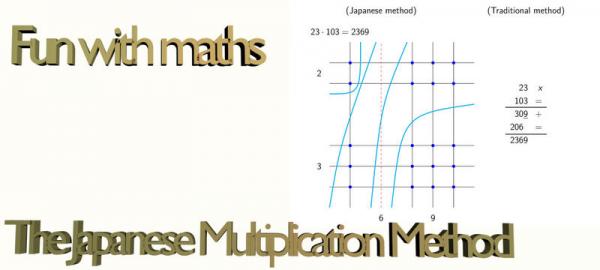
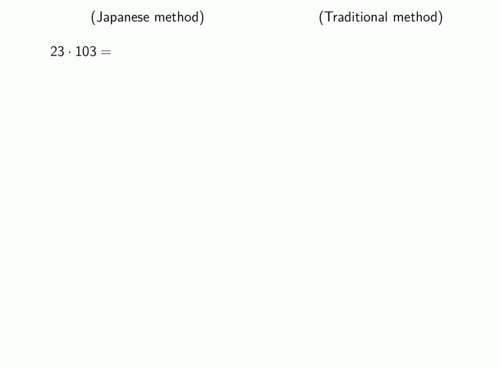 As I explain in the animation on the right and in the gallery below it consists in four steps:
As I explain in the animation on the right and in the gallery below it consists in four steps:
- transform the first factor in the equivalent number of horizontal lines leaving some empty space between every whole components and starting from the left, if a number is 0 draw a dotted line;
- draw the second factor in the same way but this time through vertical lines;
- once you a have obtained a lattice divide it in areas of influence and draw a dots wherever the lines intercept themselves (if the line is dotted don't make any dot);
- sum every single areas and write the corresponding results, then you will obtain the final result selecting the numbers in anticlockwise order starting from the top left-hand corner.
Below I made a video with four examples and a gallery in which I solve a multiplication step by step comparing side by side the Japanese and Traditional method.
I created the images of the gallery using LaTeX, as you can see online on my Overleaf

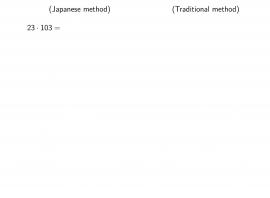
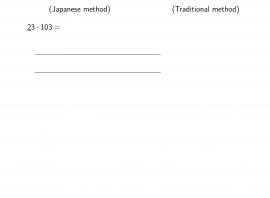
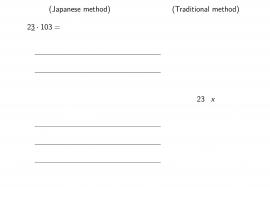

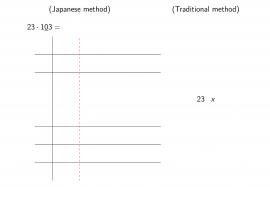
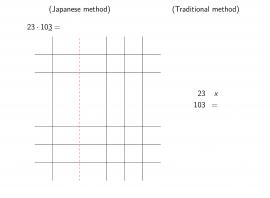
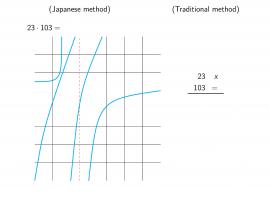
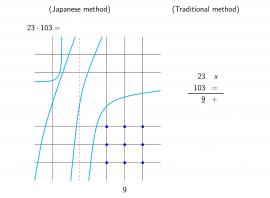
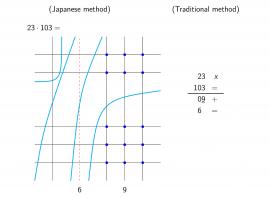
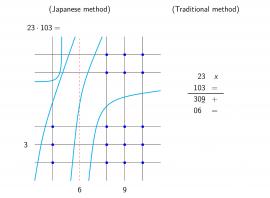
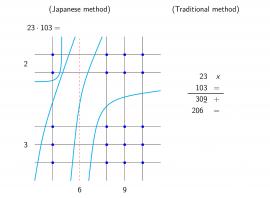
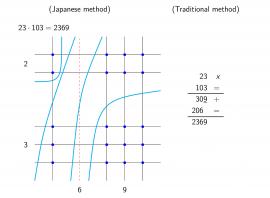






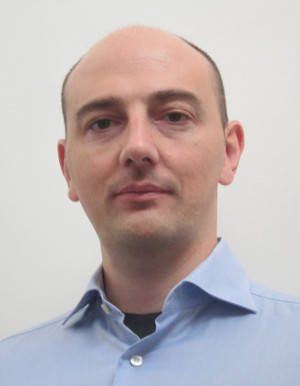






Aggiungi un commento